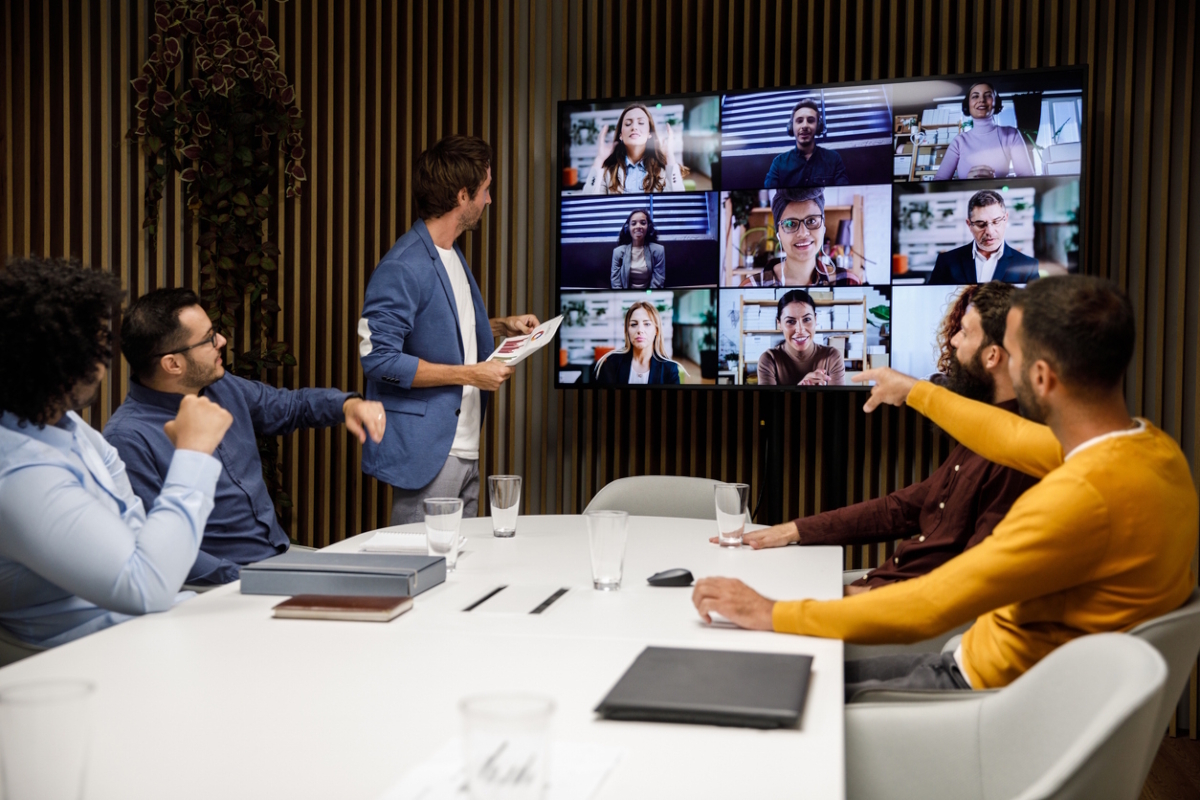The visibility effect

Nigel Dunn at Jabra explains why being seen in meetings means being heard
It starts with a deceptively simple question: Does being seen in a meeting really change anything? Turns out, it changes everything.
Our research, conducted jointly with the London School of Economics, dives into the science of visibility, not just as a feature of remote work, but as a force for collaboration.
The findings confirm what hybrid and remote workers have long suspected: when you’re clearly seen and heard, you’re not just more present: you’re more powerful.
Camera on, confidence up
Many people may notice how different they feel with their camera on. Maybe they sit up straighter, or brush their hair. They may feel more prepared to speak up. It’s not vanity, it’s visibility.
Being seen in meetings doubles engagement, doubles expressiveness, and activates your brain’s cognitive gear shift by up to 20% (causing your brain to become more attentive, quicker to react and process information more effectively). That’s more than just good lighting. Rather, it indicates that visible participants are truly showing up, signalling that they’re ready to engage with work and collaborate with colleagues.
Turning on your camera with the right equipment changes everything. Leaning in, nodding your head, smiling and making eye contact all contribute to remote participants feeling just as present as those around the conference table.
From passive to present
When someone appears as a blurry box in the corner of a screen, it’s easy for them to fade into the digital background. 98% of participants who couldn’t be seen spent their meetings with a neutral facial expression, lacking cues, energy and connection.
This matters because body language plays a significant role in communication. It’s how we show agreement, disagreement, enthusiasm, hesitation, and all other unspoken signals that drive better understanding and deeper collaboration. When those signals disappear, so does the richness of the interaction.
Even in virtual meetings, the way someone physically presents themselves carries a real impact. Simple expressions like a raised eyebrow or a supportive smile convey important messages. However, these unspoken signals only count if others can see them; that’s the visibility effect.
Body language isn’t exclusive to in-person moments; it’s a powerful part of your digital presence, too. So instead of just logging in to meetings, try showing up fully. Let your posture, expression and presence enhance the experience.
Better tech means better meetings
Here’s the reality: 95% of work still happens in small rooms. However, most of these rooms aren’t equipped for modern ways of working, lacking the proper infrastructure to collaborate effectively with remote participants. But it’s not just poorly equipped workspaces that hold workers back, 66% of people said meetings feel less effective simply because the tech they use holds them back.
That’s why visibility isn’t just a cultural question. It’s also a question of design and modernity. Our equipment and our workspaces must reflect evolving workplace trends and put meeting visibility first.
Intelligent headsets, cutting-edge cameras, and intuitive software built for the hybrid age make sure your voice and your face cut through the noise. This technology helps participants show up as their most confident, engaged self, whether they’re dialling in from a boardroom or a kitchen table.
Visibility is crucial – but isn’t everything
Despite the importance of visibility in fostering productive and collaborative meetings, greater visibility does not come without certain drawbacks. For example, visibility can also create pressure. Our study revealed a 19% drop in independent thinking when people knew they were being watched. That’s a wake-up call: the answer isn’t just to be seen, it’s to be seen with purpose.
That’s why meeting culture matters. We need tech that enables, not intimidates. We need tools that support authentic connection, not conformity. Equipment should amplify your best self, not just your self-image.
The future of work isn’t just hybrid; it’s human. When we can see each other clearly, we connect more deeply, collaborate more meaningfully, and foster better outcomes for everyone.
The visibility effect is real, and it’s backed by the data. It all starts with showing up to meetings, with your camera on, confidence high, and clear, reliable tech that lets people see and hear the best version of you.
So, whether you’re calling in from a corner office or your favourite coffee shop, remember to consider your visibility. It’s your hidden superpower.
Nigel Dunn is Vice President and MD, EMEA at Jabra
Main image courtesy of iStockPhoto.com and fotostorm

Business Reporter Team
Related Articles
Most Viewed
Winston House, 3rd Floor, Units 306-309, 2-4 Dollis Park, London, N3 1HF
23-29 Hendon Lane, London, N3 1RT
020 8349 4363
© 2025, Lyonsdown Limited. Business Reporter® is a registered trademark of Lyonsdown Ltd. VAT registration number: 830519543





